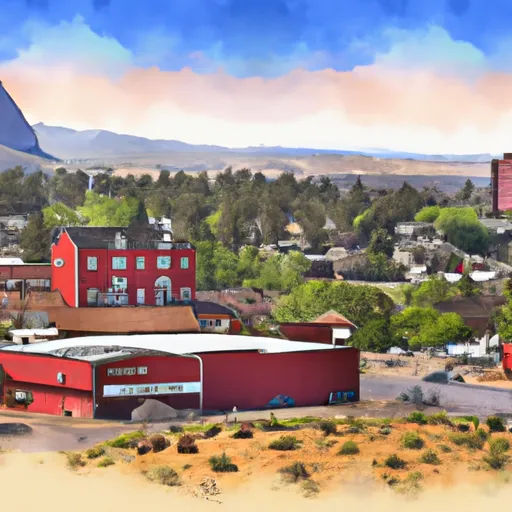-
 Snoflo Premium
Snoflo Premium
Get unlimited access to all our content
With no Ad interruptions! - Start Your Free Trial Login with existing account
Strawberry
Eden Index
Climate
10.0
•
Recreation
7.0
•
Community
0.7
•
Safeguard
6.6/10

Strawberry is a small unincorporated community located in Gila County, Arizona. Situated at an elevation of 6,000 feet in the Mogollon Rim region, Strawberry experiences a mild climate with all four seasons. Summers are warm with temperatures ranging from the 70s to 80s Fahrenheit, while winters are cool with temperatures dropping to the 30s and 40s Fahrenheit. The area receives an average annual precipitation of around 22 inches, with most of it falling during the monsoon season from July to September.
Hydrologically, Strawberry is in the Verde River watershed. The nearby Fossil Creek, a tributary of the Verde River, is known for its crystal-clear waters and abundant aquatic life, making it a popular spot for swimming, snorkeling, and fishing. Additionally, the area is scattered with numerous creeks, streams, and lakes, offering opportunities for kayaking, canoeing, and other water-based activities.
Strawberry is surrounded by the scenic natural beauty of the Tonto National Forest, providing ample opportunities for outdoor recreation. Hiking, camping, mountain biking, and wildlife viewing are popular activities in the area, with several trails and camping sites available for visitors to enjoy. The charming community of Strawberry offers a tranquil retreat for nature enthusiasts seeking to explore Arizona's stunning landscapes while enjoying the mild climate and abundance of outdoor recreational opportunities.
What is the Eden Index?
The Snoflo Eden Index serves as a comprehensive rating system for regions, evaluating their desirability through a holistic assessment of climate health, outdoor recreation opportunities, and natural disaster risk, acknowledging the profound impact of these factors on livability and well-being.
Climate Health Indicator (CHI): 10.0
Strawberry receives approximately
688mm of rain per year,
with humidity levels near 64%
and air temperatures averaging around
12°C.
Strawberry has a plant hardyness factor of
7, meaning
plants and agriculture in this region tend to thrive during the non-winter months.
By considering the ideal temperature range, reliable water supplies, clean air, and stable seasonal rain or snowpacks, the Climate Health Indicator (CHI) underscores the significance of a healthy climate as the foundation for quality living.
A healthy climate is paramount for ensuring a high quality of life and livability in a region, fostering both physical well-being and environmental harmony. This can be characterized by ideal temperatures, reliable access to water supplies, clean air, and consistent seasonal rain or snowpacks.
Weather Forecast
Streamflow Conditions
Verde
Area Rivers
Verde
Snowpack Depths
Verde
Reservoir Storage Capacity
Verde
Groundwater Levels
Recreational Opportunity Index (ROI): 7.0
The Recreational Opportunity Index (ROI) recognizes the value of outdoor recreational options, such as parks, hiking trails, camping sites, and fishing spots, while acknowledging that climate plays a pivotal role in ensuring the comfort and consistency of these experiences.
Access to outdoor recreational opportunities, encompassing activities such as parks, hiking, camping, and fishing, is crucial for overall well-being, and the climate plays a pivotal role in enabling and enhancing these experiences, ensuring that individuals can engage in nature-based activities comfortably and consistently.
Camping Areas
| Campground | Campsites | Reservations | Toilets | Showers | Elevation |
|---|---|---|---|---|---|
| Water Wheel | 20 | 4,967 ft | |||
| Third Crossing | 10 | 5,140 ft | |||
| Second Crossing | 10 | 5,086 ft | |||
| Clints Well | 7 | 6,864 ft | |||
| First Crossing | 7 | 4,865 ft | |||
| Houston Mesa | 30 | 5,039 ft | |||
| Kinnikinick | 13 | 7,066 ft | |||
| Flowing Springs | 40 | 4,580 ft | |||
| Bartlett Flat | None | 1,886 ft | |||
| Kehl Springs | 8 | 7,457 ft |
Nearby Fishing
Catastrophe Safeguard Index (CSI):
The Catastrophe Safeguard Index (CSI) recognizes that natural disaster risk, encompassing floods, fires, hurricanes, and tornadoes, can drastically affect safety and the overall appeal of an area.
The level of natural disaster risk in a region significantly affects safety and the overall livability, with climate change amplifying these risks by potentially increasing the frequency and intensity of events like floods, fires, hurricanes, and tornadoes, thereby posing substantial challenges to community resilience and well-being.
Community Resilience Indicator (CRI): 0.7
The Community Resilience Indicator (CRI) recognizes that education, healthcare, and socioeconomics are crucial to the well-being of a region. The CRI acknowledges the profound impact of these elements on residents' overall quality of life. By evaluating educational resources, healthcare accessibility, and economic inclusivity, the index captures the essential aspects that contribute to a thriving community, fostering resident satisfaction, equity, and social cohesion.

